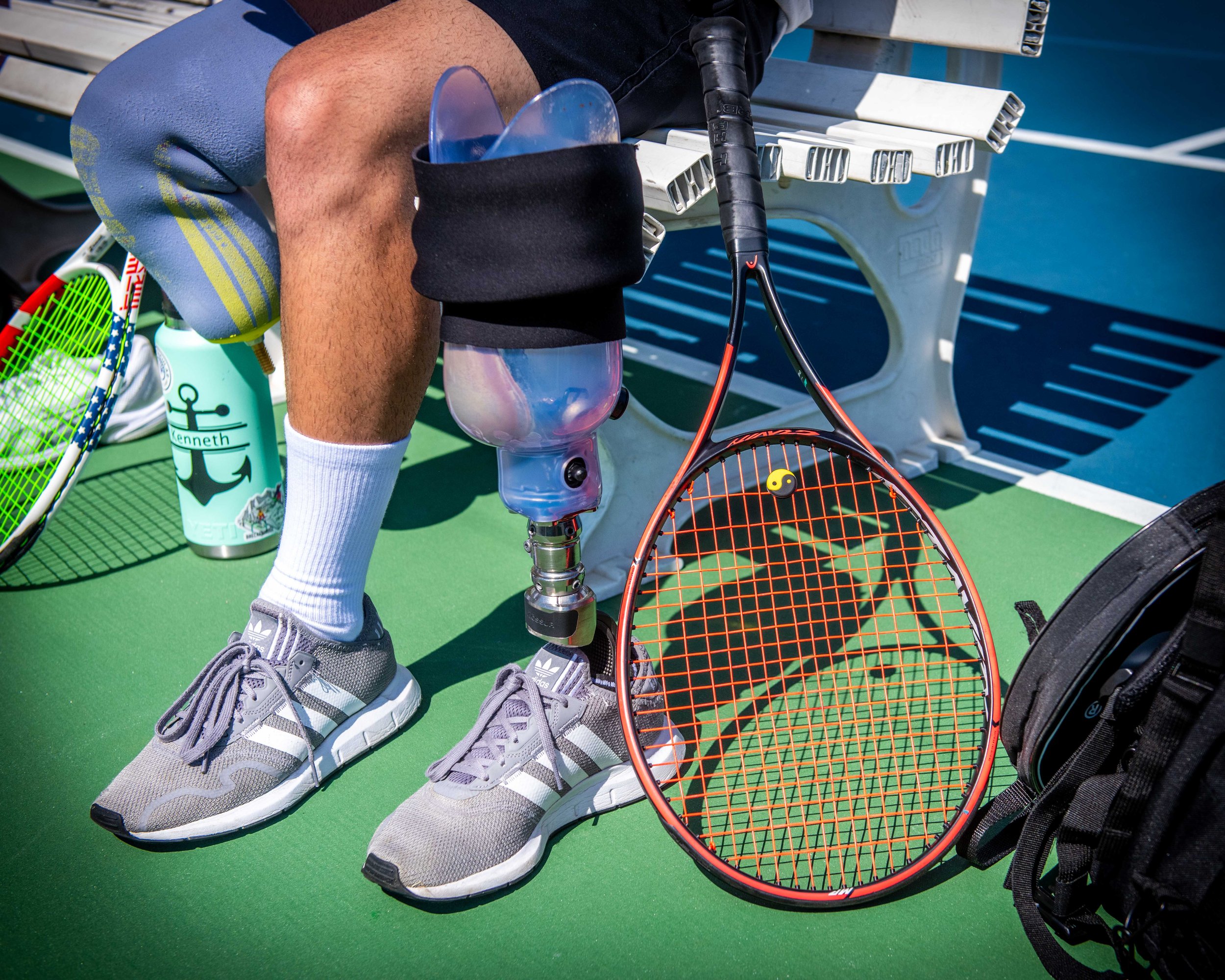
Making Tennis Available To Everyone
What is Para Standing Tennis ?
Para-standing tennis is an accessible sport for people with physical disabilities who want to play tennis without using a wheelchair.
Para-standing tennis is open to anyone with amputated limbs, brain injuries, cerebral palsy, and short-statured people. Para-standing tennis is a growing pathway recognized by the ITF and other national tennis federations.
What is Para Standing Tennis DMV ?
Para-Standing Tennis DMV is an organization that promotes opportunities for para-standing players in the Washington DC, Maryland, and Northern Virginia area (DMV).
The DMV has a large and dynamic tennis community, however, there are very few opportunities for para-standing players who would prefer to play standing. Our organization is focused on fostering a deep sense of community while expanding opportunities for para-standing players. We host free clinics and provide hitting partners, court time, and other resources for para-standing players. We also welcome partnerships with individuals and organizations who support tennis and the para-standing community. Partnerships with organizations such as tennis and rehabilitation facilities, along with those interested in health, wellness, inclusivity, and equity are welcome and appreciated.
Americans with Disabilities
Up to 1 in every 4 Americans lives with a disability that impacts everyday life.
12.1% of Americans have difficulty with mobility and around 2 million individuals have a prosthetic limb. Despite predictions of the increasing prevalence of limb loss by 2050, athletics remain largely inaccessible to people with disabilities impacting mobility. Unfortunately, people with disabilities have limited opportunities to participate in athletics, despite the significance of playing sports in terms of physical well-being and social connection.
Our Action Plan
Our goal is to foster and grow the community of adaptive tennis players and coaches through:
Providing resources (including court time and tennis balls specially designed for para-standing players);
Building partnerships with local tennis organizations and advocates;
Raising funds to support adaptive tennis programming in the DMV area;
Hosting and organizing clinics and competitive tournaments from para-standing players.
Para Standing Tennis
Tennis is a great sport:
and one of its largest qualities is versatility. Tennis is open to people of all ages and abilities and can be played competitively or recreationally. A movement known as Adaptive Tennis is focused on making tennis more accessible and inclusive for individuals with physical disabilities. The movement has garnered great success within the Special Olympics and wheelchair tennis in recent years. While the sport is progressively becoming more accessible, para-standing players are largely left out, proving a lot of work still needs to be done.
More about Para-Standing tennis:
Para-standing tennis players are people with physical disabilities who prefer to play standing up rather than in a wheelchair. Until recently, all players with physical disabilities were encouraged to use wheelchairs, even if that person did not use one in their daily lives. Players with prosthetic limbs, cerebral palsy, TBI, and other physical disabilities should have the opportunity to play standing. Coordinating and fostering this community is a critical next step for the sport as a whole.
Adapting rules and equipment:
The rules and equipment used in adaptive tennis are adjusted to accommodate players of differing levels of mobility and types of disability. Para-standing tennis can be played in singles, doubles, team competitions, and other tennis formats. The game may be played on a smaller court with modified equipment (including lighter or larger balls and modified racquets) to suit the unique needs of players with disabilities. Adapted rules include the “bouncing” rule which allows the ball to bounce twice before the player returns it. Accommodations aid players who may have difficulty moving quickly or reaching the ball.
Currently, there are formalized efforts to support programs for wheelchair tennis and tennis for people with intellectual disabilities, however, there are many tennis players who do not fit these categories. Ambulatory physically disabled players have a different set of needs and requirements. Para-standing players benefit from a different set of regulations and accommodations and they need to be given the same opportunities to play.
Playing tennis with a prosthetic limb
Playing tennis with a prosthetic limb involves good balance, flexibility, coordination, and athleticism. With knowledgeable coaches, adaptive players can excel at the sport. While they are not the only factors impacting success, It is critical to be mindful that there are a variety of prosthetic limbs, levels of mobility, and court surfaces, all of which will impact your game.
Type of prosthetic:
Different types of prosthetic limbs are designed for different levels of activity. Some are better suited for sports like tennis, while others may not be as appropriate. You should consult with your prosthetist to determine if your prosthetic limb is suitable for playing tennis.
Level of mobility:
Your level of mobility will also determine how you play tennis with a prosthetic limb. For example, if you have a prosthetic leg, you may need to adjust your stance to accommodate the prosthetic limb. You may also need to modify your footwork and movement on the court.
Court surface:
The type of court surface can also affect how you play tennis with a prosthetic limb. For example, playing on a hard court may be more challenging than playing on a clay court, as the harder surface can cause more impact and stress on your prosthetic limb.
Embrace the future of tennis.
Join | Participate | Support



